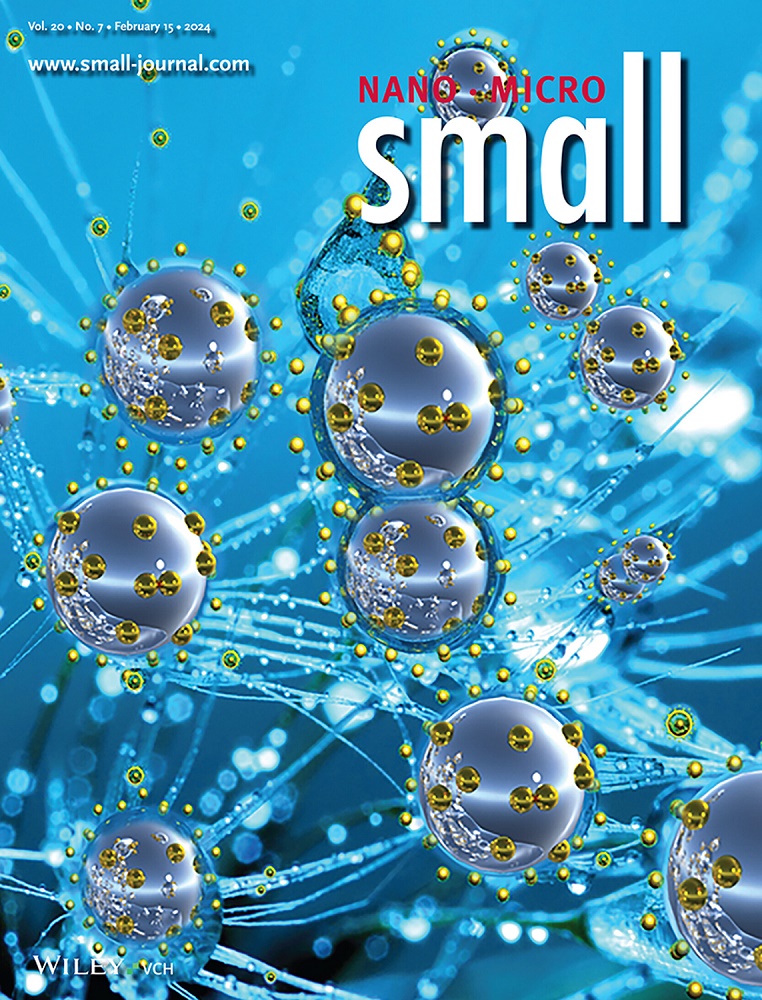Lignin-Derived Melanin-Like Nanosheets: Modulating the Microscopic Morphology and Photothermal Conversion Property through the Substituent Effect.
IF 13
2区 材料科学
Q1 CHEMISTRY, MULTIDISCIPLINARY
引用次数: 0
Abstract
Artificial melanin-like materials have attracted significant attention due to their bioactivity and photothermal conversion capability. The regulation of their morphology is essential for optimizing performance; however, this presents considerable challenges. In this study, a novel template-free approach is introduced that utilizes the Scholl reaction in conjunction with a demethylation reaction to synthesize melanin-like nanosheets. Lignin-derived triaryl-imidazole is employed as the monomer, in contrast to the commonly used phenolic monomers. The methoxy groups present in the monomers, which are derived from the original lignin structure, significantly influence the resulting polymers' characteristics, including microscopic morphology, chemical structure, optical absorption, specific heat capacity, and hydrophilicity. When veratraldehyde-derived triaryl-imidazole is utilized as the monomer, melanin-like nanosheets with a uniform thickness of 5 nm are produced, demonstrating commendable photothermal conversion performance in both bulk and suspension states, showing the potential value in solar evaporation and photothermal therapy. It is anticipated that these findings will not only facilitate the preparation of artificial melanin-like materials with tailored morphologies but also contribute to the development of lignin-derived materials with enhanced functionalities.木质素衍生的类黑色素纳米片:通过取代基效应调节微观形态和光热转换性能。
人工黑色素样材料因其生物活性和光热转化能力而受到广泛关注。它们形态的调节是优化性能的关键;然而,这带来了相当大的挑战。在这项研究中,引入了一种新的无模板方法,该方法利用Scholl反应与去甲基化反应相结合来合成黑色素样纳米片。采用木质素衍生的三芳基咪唑作为单体,与常用的酚类单体形成对比。单体中存在的甲氧基,来源于原始木质素结构,显著影响所得聚合物的特性,包括微观形态、化学结构、光学吸收、比热容和亲水性。以戊醛衍生的三芳基咪唑为单体,制备出均匀厚度为5nm的类黑色素纳米片,在体积和悬浮状态下均表现出良好的光热转化性能,显示出在太阳能蒸发和光热治疗方面的潜在价值。预计这些发现将不仅有助于制备具有定制形态的人工黑色素样材料,而且有助于开发具有增强功能的木质素衍生材料。
本文章由计算机程序翻译,如有差异,请以英文原文为准。
求助全文
约1分钟内获得全文
求助全文
来源期刊

Small
工程技术-材料科学:综合
CiteScore
17.70
自引率
3.80%
发文量
1830
审稿时长
2.1 months
期刊介绍:
Small serves as an exceptional platform for both experimental and theoretical studies in fundamental and applied interdisciplinary research at the nano- and microscale. The journal offers a compelling mix of peer-reviewed Research Articles, Reviews, Perspectives, and Comments.
With a remarkable 2022 Journal Impact Factor of 13.3 (Journal Citation Reports from Clarivate Analytics, 2023), Small remains among the top multidisciplinary journals, covering a wide range of topics at the interface of materials science, chemistry, physics, engineering, medicine, and biology.
Small's readership includes biochemists, biologists, biomedical scientists, chemists, engineers, information technologists, materials scientists, physicists, and theoreticians alike.
 求助内容:
求助内容: 应助结果提醒方式:
应助结果提醒方式:


